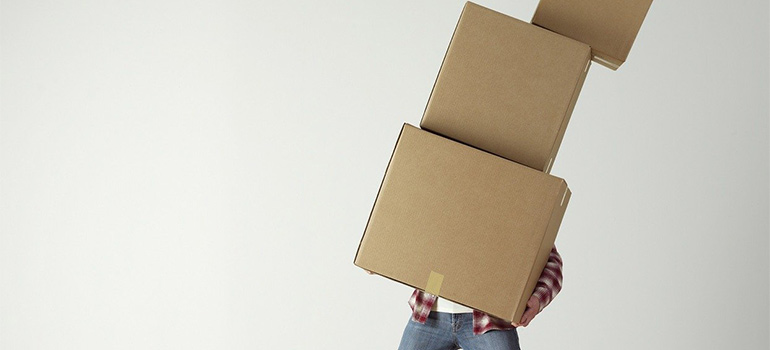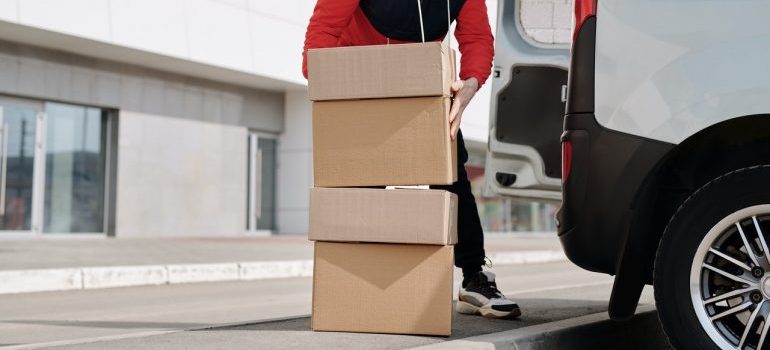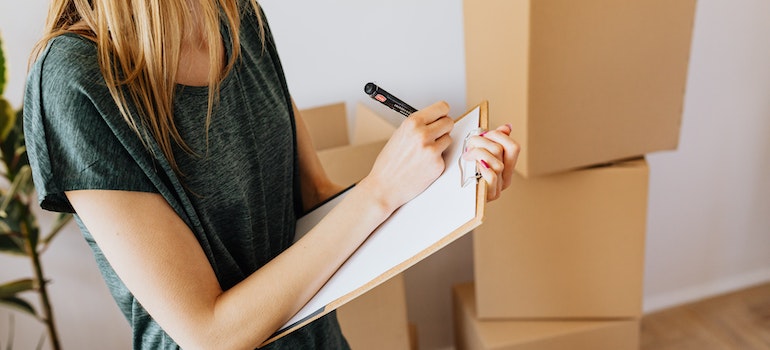Common Mistakes When Storing Fragile Items
Storing fragile items incorrectly leads to breakage, warping, or permanent damage. Seattle’s damp climate increases the risk of mold, warping, and moisture-related deterioration. Many people overlook storage conditions, proper packing materials, or organization, assuming their items will be safe in any facility. This is something that professional moving companies in Seattle understand better than most. Poor stacking, lack of climate control, and improper labeling make fragile items vulnerable. Before you store anything, understand what could go wrong. A careful plan will protect your valuables and save you money. Below is a checklist of common mistakes when storing fragile items. Review it before packing to avoid costly damage. After that, learn why they happen and—how to fix them.
Why Fragile Items Get Damaged in Storage
Most storage damage happens because of rushed decisions or lack of awareness. Some people choose the closest or cheapest storage unit without checking for climate control. Others reuse old boxes that weaken over time. You might think a thick blanket protects a glass table, but it does little against moisture or sudden impact. But there is more:
- Choosing a storage unit without climate control
- Using thin, weak boxes or low-quality packing materials
- Neglecting custom crating for large or delicate items
- Skipping protective padding inside boxes
- Overpacking or underpacking fragile items
- Failing to label boxes as “Fragile” and “This Side Up”
- Stacking heavy boxes on top of lighter ones
- Not protecting items from Seattle’s humidity and moisture
- Storing items in an unorganized manner
- Leaving stored items unchecked for long periods
In other words, storage requires a plan. You need the right materials, careful placement, experienced Washington movers, and protection against Seattle’s damp conditions. Fixing storage mistakes takes more effort than preventing them. Taking extra steps before placing your items in storage ensures they remain in good condition when you retrieve them.

Choosing the Wrong Storage Facility
Not all storage units provide the same level of protection. Some have no climate control, leaving your belongings exposed to temperature changes and humidity. Seattle’s damp weather increases the risk of mold, mildew, and warping, especially for wood, paper, and electronics. Security is another concern. A poorly monitored facility increases the chance of theft or vandalism. Limited access hours make it difficult to check on your stored items or retrieve something when needed.
How to fix it? Choose a storage facility with climate control to prevent moisture damage. Look for security features such as gated entry, surveillance cameras, and on-site staff. Ask about access hours and insurance options. If you plan to store valuables for an extended period, visit the unit periodically to check for any issues.
Using Low-Quality Packing Materials
Flimsy boxes collapse under pressure, leaving fragile items at risk. Old or reused cardboard weakens over time, increasing the chance of breakage. You may think wrapping delicate items in newspaper provides enough protection, but ink can transfer onto surfaces and cause staining. Packing tape alone does not reinforce a weak box. Poor-quality packing peanuts flatten under weight, leaving gaps inside the box.
Use double-walled boxes designed for fragile storage. Invest in high-quality packing paper, foam inserts, and bubble wrap. Wrap each item individually and fill empty spaces with soft padding to prevent shifting. Reinforce boxes with strong packing tape along the seams. Avoid stacking heavy boxes on fragile ones to prevent crushing. If storing items long-term, consider plastic bins for extra durability.
Overlooking the Importance of Custom Crating
Some fragile items need more than standard boxes and padding. Large mirrors, artwork, chandeliers, and antique furniture require custom crating for adequate protection. Many people assume standard packing materials are enough, but irregularly shaped or highly delicate items often break without reinforced support. Thin boxes and bubble wrap do not prevent pressure cracks, especially for items with glass components.
Consider using custom shipping crates in Seattle for valuable or oversized fragile items. Wood crates provide extra support and keep items stable during transport and storage. As for artwork and mirrors, use rigid corner protectors and foam padding inside crates. If crating is not an option, reinforce boxes with extra layers of corrugated cardboard and additional padding.
Also, ensure items fit snugly inside without excessive movement. To avoid mistakes when storing fragile items or high-value belongings, consult a professional moving or storage company specializing in fragile item packing. Investing in custom crating prevents costly damage and extends the lifespan of delicate belongings.

Not Using Enough Protective Padding Inside Boxes
Many assume placing fragile items inside a box provides enough protection. Without proper padding, objects shift during transport or storage, leading to cracks, chips, or complete breakage. People often rely on clothing, towels, or newspaper as cushioning, but these materials do not always provide enough impact resistance. Newspaper ink can also stain delicate surfaces. Items stored for long periods without padding may settle and press against each other, causing scratches or fractures.
Always use high-quality protective padding inside boxes. Wrap each item individually with bubble wrap or foam sheets. Fill empty spaces with packing peanuts or crumpled packing paper to prevent shifting. Use dividers for fragile items like glassware to keep them separated.
Avoid stacking multiple delicate items without protective layers in between. If storing plates or framed items, store them vertically with padding to reduce pressure from weight. Investing in proper padding materials ensures fragile belongings stay intact.
Overpacking or Underpacking Boxes
Stuffing too many fragile items into one box increases the risk of breakage. Heavy boxes are harder to carry and more likely to collapse under pressure. On the other hand, underpacked boxes leave items loose, making them shift and collide inside. Fragile objects need stable positioning to prevent damage.
If you pack fragile items yourself, pack them with just enough space to include proper padding. Use foam inserts or bubble wrap between items to prevent movement. Test the box before sealing it—if items shift when you shake it gently, add more cushioning. If not, reputable moving services in Seattle will distribute weight evenly across multiple boxes instead of cramming everything into one. The idea is to keep box weight manageable to avoid accidental drops.
Failing to Label Boxes Properly
Boxes without labels often get stacked or moved carelessly. Movers or family members might place a fragile box at the bottom of a pile without knowing its contents. A missing “This Side Up” label can lead to upside-down placement, increasing the risk of damage. Faded or unclear handwriting makes it harder to identify boxes quickly, which is one of the typical mistakes when storing fragile items.
Instead, use large, bold lettering to label fragile boxes. Include instructions such as “Handle with Care” and “This Side Up” on multiple sides. Bright-colored labels or stickers improve visibility. If storing glass, mark it separately to ensure careful handling. Consider creating an inventory list with box contents to avoid unnecessary handling when searching for specific items.

Stacking Boxes Incorrectly
Placing boxes in the wrong order leads to unnecessary pressure and breakage. Heavy boxes stacked on top of lighter ones can crush delicate items. Unstable stacks increase the risk of tipping over, damaging everything inside. Placing fragile boxes at the bottom of a pile subjects them to the weight they cannot handle. Poor stacking also makes it harder to access items when needed. If boxes are stacked too high, retrieving something from the bottom could cause an entire stack to collapse.
Start by placing the heaviest and sturdiest boxes at the bottom, as HB move management professionals would do. Keep fragile items on top, where they face the least pressure. Avoid stacking more than four or five boxes high to prevent instability. Use shelving if available to keep fragile items off the floor and reduce stacking issues.
When possible, store fragile items separately or in clearly designated sections to avoid accidental mishandling. If stacking is unavoidable, ensure each box is secure and evenly placed to minimize the risk of shifting or falling.
Forgetting to Insulate Against Moisture and Temperature Changes
Seattle’s damp climate increases the risk of moisture damage. High humidity leads to mold growth, wood warping, and rust formation on metal surfaces. Temperature fluctuations also affect fragile materials like glass, ceramics, and artwork.
Some people assume an enclosed storage unit provides enough protection, but condensation forms easily in unsealed boxes or improperly packed items. Failing to use the right insulation materials leads to irreversible damage and is among typical mistakes when storing fragile items.
Choose a climate-controlled storage unit to regulate temperature and humidity. Store delicate items in plastic bins with airtight lids instead of cardboard boxes that absorb moisture. Use silica gel packs or moisture absorbers inside boxes to prevent condensation.
Wrap wooden and fabric items in breathable covers to reduce humidity exposure. Keep metal objects polished and covered with protective coatings to prevent rust. If storing electronics, place them in anti-static bags with desiccant packets.
Storing Fragile Items Without Proper Organization
Disorganized storage increases the risk of accidental damage. Placing fragile items randomly among heavier objects leads to unnecessary pressure and breakage. Storing breakable items in hard-to-reach spots makes retrieval difficult and increases the likelihood of dropping something. Not having an inventory list leads to unnecessary handling when searching for a specific item.
Keep fragile items in a designated area within the storage unit. Use shelves or elevated platforms to avoid stacking delicate boxes on the floor. Store similar fragile items together to prevent heavier objects from shifting onto them and avoid typical mistakes when storing fragile items.
Keep a written inventory list to track what is stored and where. If certain items will be needed sooner, store them near the front for easier access. Consider using clear plastic bins to quickly identify contents without opening boxes.

In a digital format, you can:
- Create a digital inventory spreadsheet with item descriptions, box numbers, and storage locations.
- Use storage management apps that allow you to categorize, tag, and search for stored items easily.
- Take photos of stored items and link them to a digital list for quick visual reference.
- Label boxes with QR codes that, when scanned, display a detailed inventory of the box’s contents.
- Set reminders for maintenance checks in a calendar app to inspect fragile items periodically.
If you are a fan, these digital methods improve organization, reduce handling, and make retrieval faster and more efficient.
Not Checking Storage Conditions Regularly
Some people assume stored items will remain in perfect condition without maintenance. Months of neglect allow unnoticed problems to escalate. Moisture buildup, pest infestations, and structural damage can occur if a unit remains unchecked for long periods. Boxes may shift, fall, or weaken over time, leaving fragile items exposed. A storage facility’s conditions can also change due to leaks, temperature fluctuations, or other unexpected issues.
Visit the storage unit at least once every few weeks to inspect the condition of fragile items. Check for signs of moisture, pests, or box deterioration. If an issue is found, take immediate action by replacing damaged materials or adjusting storage conditions. Rotate items if necessary to prevent pressure damage from prolonged stacking. If storing for an extended period, consider using monitoring tools like humidity sensors to track environmental changes.
Protect Your Fragile Items from Costly Mistakes
Poor storage decisions lead to avoidable damage. Choosing the wrong facility, using weak packing materials, or neglecting moisture protection all put fragile items at risk. Many overlook organization, labeling, and proper stacking, as well as experienced local movers in Seattle, assuming their belongings will remain safe in any condition. Such mistakes often go unnoticed until it’s too late.
Taking the right precautions saves money and prevents unnecessary loss. Invest in high-quality packing materials, choose a climate-controlled facility, and store fragile items in a well-organized manner. Regularly check on your stored belongings to catch issues before they escalate. Simple adjustments can make a significant difference in protecting valuables during a move or long-term storage.
Seattle’s climate adds an extra challenge, but careful planning ensures your fragile items remain intact. Take the time to store them correctly, and avoid the mistakes when storing fragile items altogether.
Why Choose Us
History
Hansen Bros. Moving & Storage is locally owned and operated by the same family for four generations, since 1890. We have a well-established reputation for service quality and reliability with a high percentage of repeat household and commercial clients.
Professionalism
We’re a certified ProMover by the American Moving and Storage Association with A+ rating with the Better Business Bureau, voted “Best in Western Washington” in 2009 and from 2011 to 2016 by KING5. Our company is fully licensed and insured and member of WMC and AMSA.
Value
Hansen Bros. Moving & Storage provide free, no-obligation in-home estimate and competitive rates, including low minimum rates for shipments moving under 300 miles. We’ve set a refund policy for unused packing materials and three Puget Sound locations to help clients save on travel fee costs.



